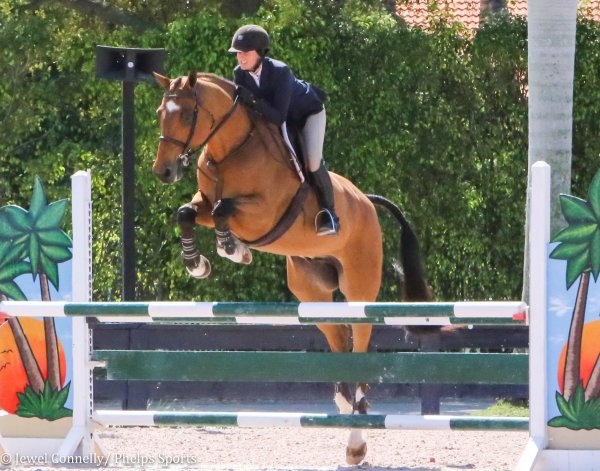Is it time to separate hunters and jumpers?
Before everyone starts the wailing and gnashing of teeth, my first caveat is that I don’t think separating the two is actually feasible, for several reasons. On the other hand, it’s an interesting question to consider, if only to understand why it probably won’t ever happen, and why it probably shouldn’t happen. I’m also not sure what to do about equitation; it used to be a link between the two disciplines for young riders, producing effective riders out of the hunter ranks for the future top levels of show jumping. That isn’t really the case for most equitation riders today, and we have entire training programs devoted to equitation and nothing else. For now, we will let that lie and see what we think later.
The hunter of old (i.e. 1980s and earlier) was often a two- or three-ring horse. All of my junior hunters doubled as equitation horses. This was part of their salability; a kid could ride them in the hunters AND they could behave respectably in a Medal class! There were several at my barn who could do jumpers, as well. We still had outside courses, the hunters were allowed to show some personality and maybe even gallop, the lowest height outside of the ponies was 3’, and everyone aimed to jump at least 3’6.” I’m not saying this was better, but it sure was different from today! Even with the advent of big ticket derbies, most hunters are loping around on a loopy rein, and many riders choose to stay below 3’. There’s absolutely nothing wrong with jumping below 3′ of course, but the fence heights and style of riding were quite different indeed.
 Karen Roche competing in the hunters. Photo by Sportfot.
Karen Roche competing in the hunters. Photo by Sportfot.
Jumpers are a whole different animal, figuratively if not literally. While there are certainly some horses who can cross between rings, the vast majority spend most of, if not their entire career in one ring. Also, because jumper courses today are trickier and (generally) larger than the average hunter course, the way we ride one or the other is not at all similar. My jumper goes in a high, collected frame, and I sit to the base of most jumps (I’m trying to channel Marcus Ehning). Certainly some jumper riders, especially Americans, do more of a half seat, but the semi-permanent two-point position of the hunter rider is rarely seen in today’s jumper ring.
 Sabrina Lefebvre competing in the jumpers. Photo by Sportfot.
Sabrina Lefebvre competing in the jumpers. Photo by Sportfot.
OK, so we train our horses to do different things and we ride differently; is that enough reason to divide them into two separate competition spaces? What would we gain? Well, for jumper riders it would probably mean the day would go faster. No more ring holds while we wait for a trainer to come from the pony ring or the AA Hunter class running at the same time as the AA Jumper class. Jumpers also tend to move our classes along more efficiently; the next competitor trots into the ring while the current one finishes her course. For hunters whose trainers also work with jumpers, the benefit would be the same. And…both hunters and jumpers would have the entire venue to themselves for their competition.
But but but! What about people who ride/have horses in both rings? How would horse shows divide up their weeks? The smaller shows might just ditch jumpers altogether, since there are a lot more hunter divisions than jumper divisions. Many trainers have multi-ring programs for their own horses and their students; how would this impact their businesses? What about the big shows, like Upperville and Devon? Upperville already runs like two different shows: jumpers on one side of the road and hunters on the other. But, again, many of the barns have horses and riders on both sides. And…what about equitation? Do we entirely give up on the idea that it’s a feeder for upper level show jumping and let the hunters have it?
 Abigail Brayman competing in equitation. Photo by Jewel Connelly / Phelps Sports.
Abigail Brayman competing in equitation. Photo by Jewel Connelly / Phelps Sports.
Of course, the logical answer to all of these questions is: No, Susan, we cannot and should not divide the two into different shows (nor should we give equitation to the hunters)! Instead, maybe we need to rethink why the three disciplines are so far apart from each other these days. This is not how it used to be, back when most junior hunters doubled as equitation horses and some were true three-ring horses.
Was that better? I don’t really know. Today I cannot imagine being back in the hunter ring, and I have a feeling that most who exclusively ride hunters aren’t interested in stepping foot into world of the stripey poles, no ground lines, and timers — but why is this? As a child, I coveted my friend’s very fancy horse, who could win in all three rings. I once won a mini Maclay on my five year old hunter who enjoyed playing after each jump and in the corners. The judge noted that I was able to ride effectively in good form and complete the course despite my greenie’s shenanigans. Is it really better that so many of the big, handsome equitation horses of today go like automatons, or that a horse showing some character in the hunter ring is still frowned upon?
None of this is meant to be a criticism! A gorgeous hunter round is beautiful to watch, and the skill it takes to produce that lovely, flowing, perfect trip is considerable. I keep coming back to my original questions, though, wondering what we have lost by drawing such stark divides between our rings. Is it time to break down our silos a little?
